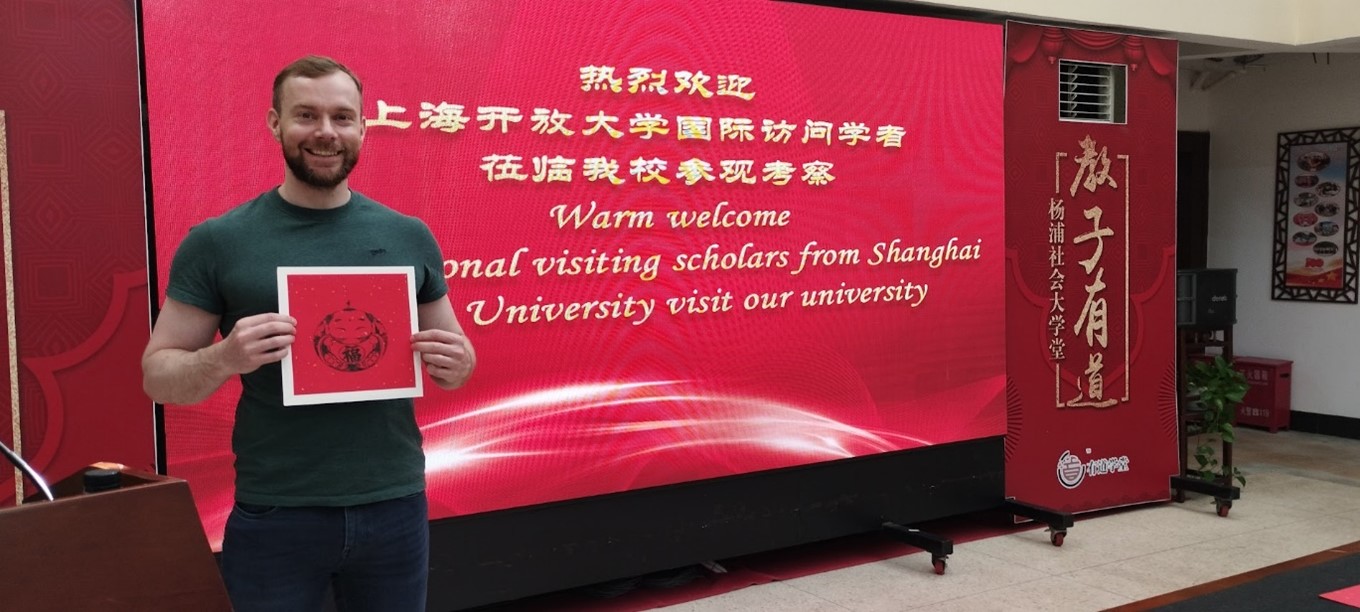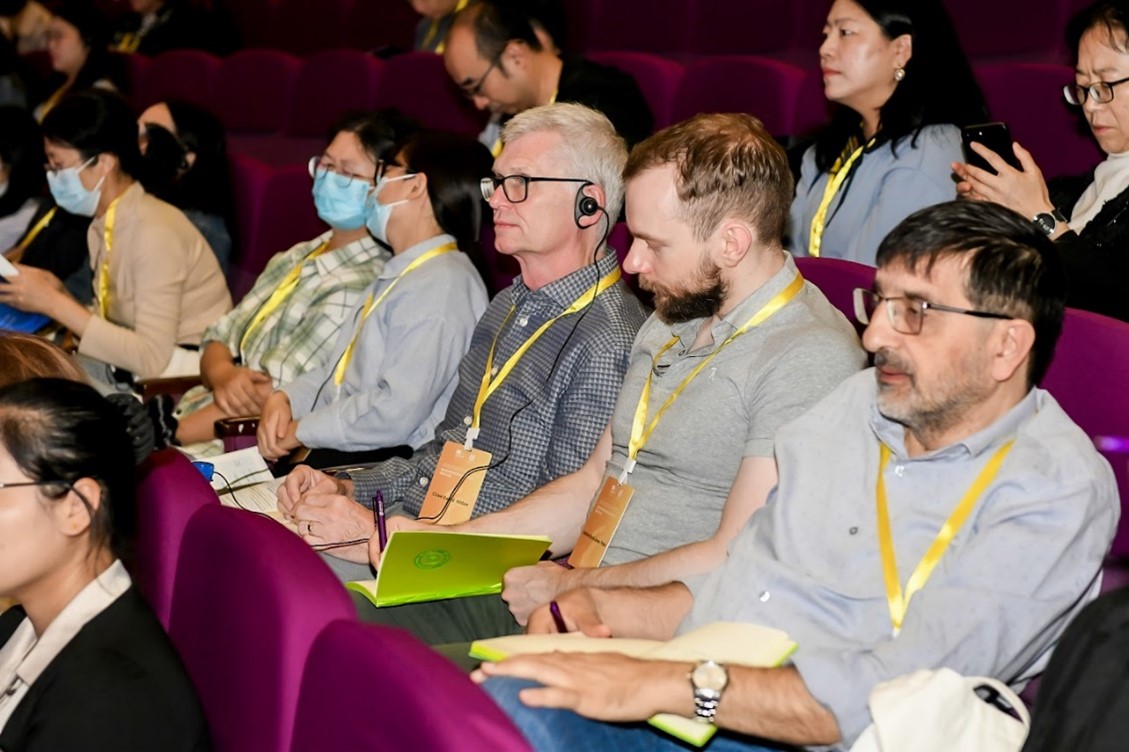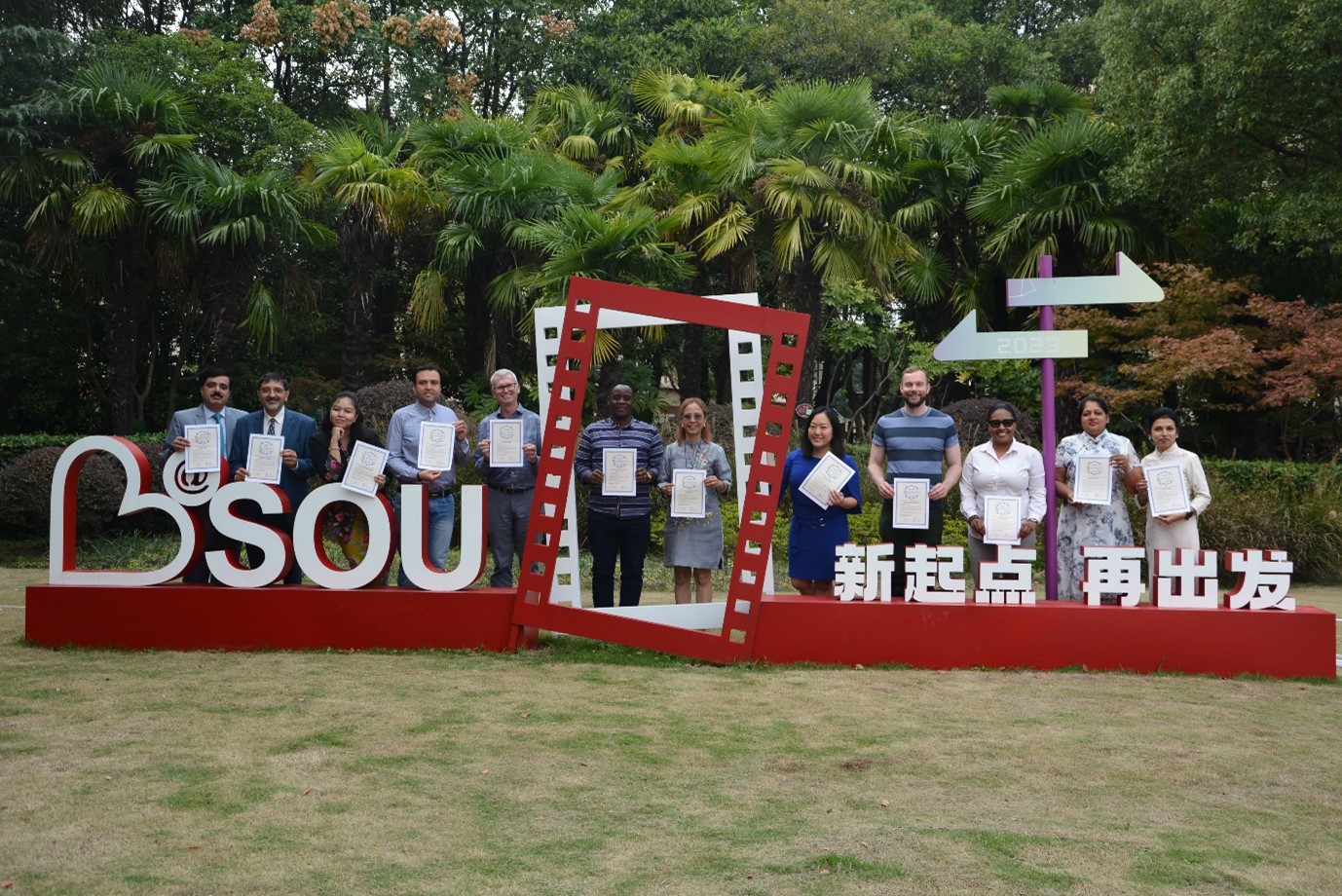eSTEeM
Centre for Scholarship and Innovation
You are here
- Home
- News
- 2023
- Cross-cultural collaborations through the Shanghai Open University International Visiting Scholars Program
Cross-cultural collaborations through the Shanghai Open University International Visiting Scholars Program
2nd November 2023
For the first time since the pandemic, Shanghai Open University (SOU) reopened their annual International Visiting Scholars Program in October 2023, and eSTEeM project leader Andrew Potter (pictured below) was one of the successful applicants. Supported by eSTEeM, Andrew travelled to Shanghai to join 11 other scholars from the UK, US, Jamaica, Cyprus, South Africa, Tanzania, Mauritius, Pakistan, Bangladesh, Malaysia and Papua New Guinea. Over two weeks they visited SOU campuses and branch school sites, met with SOU teachers, researchers and professional support staff, and participated in cultural exchange activities, all to encourage greater cross-cultural communication and international research collaboration.
 Andrew is a project leader (along with Diane Butler) for the eSTEeM project ‘Evaluating the use of an Inclusive Curriculum Tool in STEM modules’. During this project, Andrew became interested in the ways in which the STEM curriculum could be internationalised, and so the SOU Visiting Scholars Program was an ideal opportunity to explore how STEM curricula are presented in other national contexts.
Andrew is a project leader (along with Diane Butler) for the eSTEeM project ‘Evaluating the use of an Inclusive Curriculum Tool in STEM modules’. During this project, Andrew became interested in the ways in which the STEM curriculum could be internationalised, and so the SOU Visiting Scholars Program was an ideal opportunity to explore how STEM curricula are presented in other national contexts.
The project looked at the use of the University’s Inclusive Curriculum Tool to review OU STEM modules for inclusivity. Associate Lecturer reviewers were provided with intensive training in Equality, Diversity and Inclusion issues in teaching and learning, and used the Inclusive Curriculum Tool to suggest improvements to inclusivity and identify good practice in inclusive STEM teaching and learning. The reviewers kept reflective journals and were interviewed about their experiences.
One of the emerging themes from reviewers was that case studies and data sets used in STEM module materials were often drawn disproportionately from Europe and North America, and particularly from the UK context. Where countries from the Global South were mentioned at all, it was often in the context of ecological disaster or negative health outcomes, suggesting a skewed representation of the world’s participation in STEM research. Andrew is interested in seeing the extent to which the same issues in STEM teaching occur in other countries and contexts: do STEM curricula in other contexts display a Western bias, a local bias, or a more international outlook?
 Reflecting on his experiences, Andrew said: “What became apparent to me was the way in which the word ‘inclusion’ has different shades of meaning to different people. For many of my fellow scholars, ‘inclusion’ referred to specific challenges in their own national or cultural context. For some, ‘inclusion’ meant tackling digital poverty and financial barriers to educational access. For others, ‘inclusion’ was about improving gender equity, widening access to disabled students, and/or redressing historic injustices perpetrated by colonialism. It made me realise how important it is in building an internationalised curriculum to define precisely what is meant by ‘inclusion’.”
Reflecting on his experiences, Andrew said: “What became apparent to me was the way in which the word ‘inclusion’ has different shades of meaning to different people. For many of my fellow scholars, ‘inclusion’ referred to specific challenges in their own national or cultural context. For some, ‘inclusion’ meant tackling digital poverty and financial barriers to educational access. For others, ‘inclusion’ was about improving gender equity, widening access to disabled students, and/or redressing historic injustices perpetrated by colonialism. It made me realise how important it is in building an internationalised curriculum to define precisely what is meant by ‘inclusion’.”
 Andrew hopes to collaborate further with his new international colleagues to further explore the topic of inclusivity in STEM distance teaching and learning. He says, “I am so grateful to eSTEeM for affording me the opportunity to take part in this truly life-changing experience. The value of cross-cultural exchange and making friends and research networks which span across the globe cannot be underestimated. The challenges we face as STEM practitioners are increasingly global, and it’s all the more important STEM educators reach across cultural borders to make sure we work together with our STEM students to solve the world’s most complex and pressing issues.”
Andrew hopes to collaborate further with his new international colleagues to further explore the topic of inclusivity in STEM distance teaching and learning. He says, “I am so grateful to eSTEeM for affording me the opportunity to take part in this truly life-changing experience. The value of cross-cultural exchange and making friends and research networks which span across the globe cannot be underestimated. The challenges we face as STEM practitioners are increasingly global, and it’s all the more important STEM educators reach across cultural borders to make sure we work together with our STEM students to solve the world’s most complex and pressing issues.”
News
- The Benefits of Developing a Community of Practice for OU Associate Lecturers 11th March 2024
- Registration now open for the 13th eSTEeM Annual Conference 27th February 2024
- eSTEeM Call for Scholarship Proposals January 2024 22nd January 2024
- The 13th eSTEeM Annual Conference 2024: Call for abstracts now open 5th December 2023
- New eSTEeM projects now up and running 30th November 2023